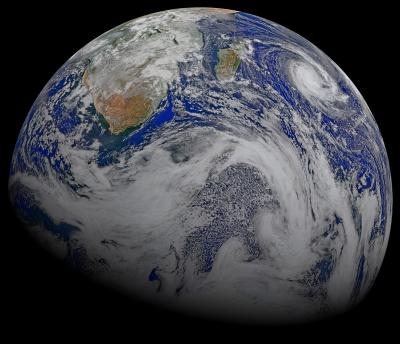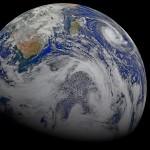Sea Critters Rule the Clouds
How clouds form and how they help set the temperature of Earth are two of the big remaining questions in climate research. Now, a study of clouds over the world's remotest ocean shows that ocean life is responsible for up to half the cloud droplets that pop in and out of existence during summer. A team of scientists led by Pacific Northwest National Laboratory atmospheric researcher Dr. Susannah Burrows and collaborator Daniel McCoy, who studies clouds and climate at the University of Washington, reveal how tiny natural particles given off by marine organisms—airborne droplets and solid particles called aerosols—nearly double cloud droplet numbers in the summer, which boosts the amount of sunlight reflected back to space. For the first time, this study estimates how much solar energy that equates to over the whole Southern Ocean as published in a recent edition of Science Advances.
The study combines computer modeling with satellite data over the Southern Ocean, the vast sea surrounding Antarctica. To flesh out the role of different aerosols, the PNNL and UW-led team used computer model to simulation of both marine organic matter and sulfates. Sea salt is also an important source of cloud droplet nuclei, and was assumed to contribute a comparatively constant source of particles in this region. In addition, they turned to a new set of satellite measurements of cloud droplets.
Comparing the concentrations of all three ocean-derived components with satellite measurements of cloud droplets, the researchers developed a new mathematical equation describing how the sulfates and organic matter relate to cloud droplet concentrations. Plugging simulated aerosol data into their new model, the researchers found it recreated the actual cloud droplet data well.
Because it's hard to see the effects of marine aerosols in other parts of the world, the researchers will be able to apply what they've learned about the mechanism and strength of the aerosol interactions with clouds to studies in other regions.
For more information, see the PNNL news release, How Clouds get their Brightness
The research was supported by the U.S. Department of Energy (DOE) Office of Science Biological and Environmental Research for the Earth System Modeling program; NASA; the U.S. Department of Defense; and the National Science Foundation.


